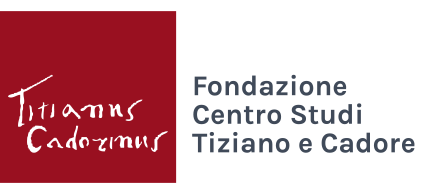Studi Tizianeschi, vol. X, is as usual divided into two sections, the first being devoted to essays, the second to book reviews. The first article is by German researcher Sabine Engel; it deals with Titian’s fascinating portrait of Laura Dianti, lover of Alfonso d’Este. The woman is dressed in an apparently exotic fashion (“Turkish style”?), perhaps in an attempt to “ennoble” her in the eyes of Western viewers. The exquisite depiction of the black page at her side is to the best of our knowledge the first appearance of such a figure in European portraiture. Dr. Engel traces contexts and meaning embodied in this extraordinary image while also offering a fine survey of the remarkable impact the Dianti portrait had on European painting of the seventeenth century.
To another German scholar, Dr. Peter Luedemann, appreciated by our readers for some time, we owe an article focused on Titian’s graphic work, which ties in with Dr. Luedemann’s earlier research in the volume Tiziano. Le botteghe e la grafica (“Titian, his ateliers and graphic work”). The focus of this new study is a still unpublished drawing which came out of Titian’s atelier, dating to the period of Titian’s maturity. Having provided a well-structured contextualization of this previously unstudied drawing, Dr. Luedemann assesses its importance as an artwork and also as a documentary source in its own right, thereby proposing a convincing attribution to Titian. The last piece is a study of the Pala Genova, a Titianesque altarpiece which adorns to this very day the Archdeacon Church of Santa Maria Nascente (The Nativity of the Virgin Mary), Pieve di Cadore. The study comprises two distinct contributions: the first by Antonio Genova and Letizia Lonzi, the second by Alessandra Cusinato. Taken as a whole, the two articles provide a comprehensive monograph on this artwork which recently (2016) underwent a praiseworthy restoration.
Part 2 contains reviews of three volumes focused on Titian in a broad sense, which for various reasons risk passing unnoticed by scholars of the Cadore region. Additionally, it offers an invaluable reflection by Michele Di Monte in his customary in-depth analysis, providing a commentary on the current state of Titian studies over the past two years. The volume ends with an essay by Enrico Dal Pozzolo dedicated to the memory of Lionello Puppi (d. 2018), the eminent Titian scholar who served as a member of the Fondazione Tiziano scientific committee for many years.

